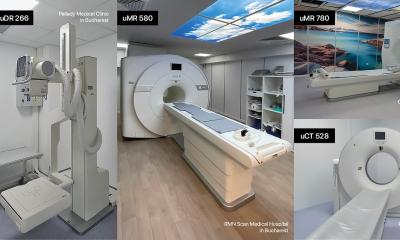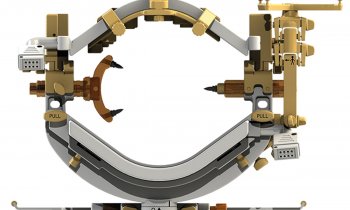The contrast media controversy
Recently, nephrogenic systemic fibrosis (NSF), a rare kidney disease, has been associated with the administration of gadolinium-containing contrast media, particularly gadodiamide, marketed by GE Healthcare under the name Omniscan.
European Hospital asked Dr Christoph U. Herborn, (right) Associate Professor of Radiology and Director of MRI at the Medical Prevention Centre Hamburg (MPCH) at the University Medical Centre Hamburg-Eppendorf, about the possible connection between gadolinium and NSF
Before discussing a possible connection between gadolinium and nephrogenic systemic fibrosis (NSF), Dr Herborn offered a brief background:

‘In MRI imaging we use two types of contrast media — paramagnetic and superparamagnetic. Paramagnetic contrast media contain the rare earth Gadolinium, which is also contained in Omniscan. As a disease, NSF was first documented in 1997. It is only found in patients with terminal kidney insufficiency – and surprisingly also in patients undergoing dialysis. The possible connection between contrast media containing gadolinium and NSF was described for the first time in 2006.’
If Omniscan is one of many gadolinium-containing contrast media, why is it the only one being implicated?
‘It is undoubtedly related to the data we have available. The data on contrast media and NSF relate to the two contrast media that are mostly in use worldwide. One of these is Omniscan, which has particularly widespread use in the USA – and it’s from there that we receive the most data regarding contrast media containing Gadolinium and NSF, because data collation is most advanced in the US. However, in principle all contrast media containing gadolinium bear this risk. As free gadolinium is toxic we build chemical ligands around the gadolinium-ion, called chelate complexes, which make these compounds stable. There are standardised chemical procedures to test this stability. However, we do not know for sure whether the stability or instability respectively of paramagnetic contrast media really does play a role in the development of NSF.
‘There have only been about 300 cases of NSF so far. Since 1988 around 200 million people have been injected with contrast media containing gadolinium, and now we have a serious problem — which must not be underestimated — but only in 300 patients. There is no doubt that it is a catastrophe if patients already suffering kidney disease also develop NSF. Despite this, I would advise that this subject should be approached in a scientific rather than an emotional manner. We are not sure how this terrible disease develops and what the actual causes are. In my view there can be no doubt that gadolinium is associated with the development of NSF, be it as a trigger factor or an accelerator or maybe even as the actual underlying cause of the disease.’
How may these findings influence the use of MRI contrast media?
‘In the last few years we have been promoting MRI imaging with contrast media because it is well tolerated, the applied doses are relatively small and we have assumed that dialysis filters out the contrast media after the examination. These were clear advantages compared with the X-ray contrast media known to be nephrotoxic. But it looks as if things are not actually that simple. Now we have a problem with patients suffering renal insufficiency who may have been injected with contrast media containing gadolinium for MRI examinations over many years, because we thought that we could carry out MRI imaging with these contrast media without any problems. Not using contrast media at all for these patients cannot be an option. Rather, we should develop guidelines stating, for example, that patients with renal insufficiency from stage IV should ideally not be given gadolinium.
‘Even more important: As radiologists, we must emerge from our dark rooms where we carry out the diagnosis and take a closer look at the patients before carrying out examinations. We must not carry out standard procedures along the lines of “0.3mmol contrast medium per kilogram of body weight for an MR angiography”, but we should evaluate whether certain types of examinations and procedures should be used for certain patients who may be better off having less or no contrast media injected.
‘These new procedures do exist: We can, for instance, carry out arterial vascular imaging with steady-state free precession sequences, or whole body and/or organ diffusion imaging where the Brownian motion (molecular movement) is being shown. These are procedures that deliver outstanding results without the use of contrast media. This will not work for all patients, but we should still consider how we can integrate these alternatives into our workflow.
The radiologist should be right next to the equipment and ensure that all high risk patients receive the optimum examination. Not all our patients, of course, are at high risk: 99% of them can be examined with standard procedures. But for our risk patients we definitely have to get out of our dark rooms.
30.04.2008











